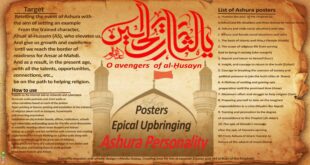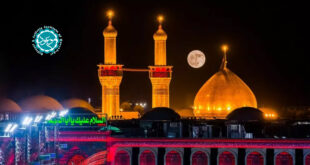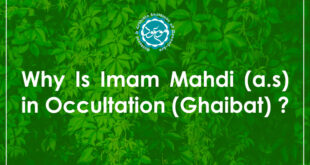Makkan immigrants mixed with the local populace, the ‘Ansar’ (Helpers), and cheerfully started giving shape to Islam’s first-ever mosque which would be known as Masjid-an-Nabi (Prophet’s Mosque). The building was soon constructed of clay and tree trunks with palm leaves serving as a thatched roof. The Messenger of Allah himself took part in the construction and the following year he enlarged its precincts to cover an area of 2475 square meters.
All Muslims enthusiastically assembled there for the daily prayers, which were led by the Prophet himself. He used to deliver sermons there, teach the Qur’an and the laws of Islam to the faithful, discourse with his companions, prepare them for ‘Jihad’ (holy struggle) and would look into their problems and other relevant issues. Thus, the Mosque was actually the headquarters of the first-ever Islamic State established by the Messenger. It still stands majestically today, frequently enlarged and beautified throughout the last fourteen centuries. The tomb of Prophet Muhammad [s] is situated within its enclosure, and draws millions of Muslims from all over the world.
2. Fraternisation
The second important step taken by the Prophet in Madina was the fraternising of ‘Muhajireen’ (Makkan Immigrants) with the ‘Ansar’ (Madinite Helpers) in the bonds of Islamic brotherhood. He fraternised each Muhajir with an Ansar, joining them together as brothers in faith. And he himself clasped the hand of his beloved cousin Ali bin Abi Talib [a] as the supreme symbol of brotherhood, fraternity and solidarity in the Islamic society.
Before proceeding further let us say a few words about the Muhajireen and the Ansar, who formed the pillars of the Islamic State. Allah, the Exalted describes them in the Qur’an as follows:
“And as for the first and foremost of the Muhajireen (emigrants) and the Ansar (helpers), and those who followed suit in good deeds; Allah is pleased with them and they are pleased with Him; and He has prepared for them gardens watered by running streams, therein dwelling forever; that is a supreme triumph.”
Holy Qur’an (9:100)
The Muhajireen as the name suggests were the Muslim emigrants from Makkah who had followed the Prophet of Madina to safeguard their faith and to escape persecution from the infidels. They had embraced Islam in its early formative years and most of them had steadfastly endured severe pain and hardship in the way of liberty, truth and justice.
On the other hand, the Ansar were the indigenous inhabitants of Madina, who believed in the Message of Islam and rallied to the help of the Prophet. They welcomed him to their city, and fought alongside him against the pagans of Arabia. It was their faith and selfless devotion which cemented Islamic unity and brought many a glorious victory for Islam.
At the time of the H4ra most of the Muhajireen were poor and possessed nothing, but the Ansar displaying the finest example of Islamic brotherhood, provided them with their needs such as houses, money and food. They lodged them in their own houses, shared their wealth with them and gave their daughters in marriage to the Makkan Muslims.
Such were the Muhajireen and the Ansar – brothers sharing food, clothing and residence, and defending and helping each other as ordered by the Almighty. From them we learn patience, self-sacrifice, fraternity, piety and devoted zeal to spread the call of Islam to less fortunate people around the world.
3. The Islamic State
The other important event after the Hijra was the establishment of the Islamic State and Government by the Prophet, who by applying the gradual unfolding of divine commandments, moulded the hitherto ignorant Arabs into a real Islamic society. Expounding the eternal miracle of the Holy Qur’an and setting his own divinely inspired personality as a practical example, he firmly erected the pillars of justice and virtue. In short, Prophet Muhammad [s] presented to the dark world seething under tyranny and oppression, the most perfect ever constitution – spiritual, social and political and a key to their salvation both in this mortal life and the hereafter.
4. Jihad
The next stage was Jihad or holy struggle, a thing not known in Makkah. It was the natural consequence to the setting up of a state. Unbelievers, ever-intent to stamp out the divine call but seeing Islam finely knit unto a secure state, resorted to arms, and the Muslims had to follow suit to defend their faith, and according to Allah’s injunctions went out to do battle with the aggressors.
The first ever battle between Islam and blasphemy occurred in the second year of the Hijra at a place called ‘Badr’ in which the new-found Islamic State, assembling a modest force of only 313 Muslims defeated a vastly outnumbering army of disbelievers. The victory led to many other battles and skirmishes with the Makkan infidels, who each time came out in larger numbers to avenge their previous setbacks, but by Allah’s Grace suffered defeat after defeat at the hands of the faithful.
The victories brought strength and courage to the Muslims and helped facilitate the spread of Islam and monotheism to the farthest reaches of polytheist Arabia.
5. End of Jewish Plots and Treacheries
Ever since the Prophet’s entry into Madina, the treacherous Jews had vehemently opposed him and his Islamic call, evoking memories of their hostility to the previous Prophet, Jesus Christ (a), half a millennium ago. The crafty Jews entered into an alliance with the polytheist Quraish in a bid to stamp out Islam. They conspired to kill Prophet Muhammad [s] despite the fact that he was lenient towards them and had treated them kindly, hoping to convince them of Islam’s truth. But eventually as Jewish plots and aggressions increased, he had no choice other than to take up arms against them, in order to protect Islam and the Muslims. At the battle of Khaiber which is famous for Imam Ali’s [a] heroic exploits, the Prophet defeated them ending Jewish intrigues and conspiracies in Arabia.
6. The Treaty of Hudaibiyah
Another important landmark in the Prophet’s life and progress of the Islamic call was the treaty of Hudaibiyah.
One night Prophet Muhammad [s] had a dream in which he saw that he and his companions were entering the precincts of the Holy Ka’aba in Makkah to perform the ‘Tawaf’ (circumambulation), but the infidel Arabs were trying to obstruct their entrance. Following the dream, he decided to go to Makkah with some 1,500 Muslims to perform the pilgrimage. It was in the sixth year of the Hijra, and when the party arrived at a place called Hudaibiyah, the infidels confronted them and blocked all routes to Makkah. After some deliberations the infidels and the Prophet concluded a treaty, stipulating that the Muslim party would for the moment go back to Madina, but would return the next year for performing the pilgrimage. There were some other terms too.
As per the treaty the Messenger and his companions turned back to Madina, but the next year the Prophet along with a group of Muslims entered Makkah – 7 years after his historical migration – to perform the Umrah ritual (the lesser pilgrimage). Thus, his dream came true, and it was another undeniable proof of his Prophethood.
7. The Conquest of Makkah
Next followed the great event in the history of Islam, that was the conquest of Makkah, the then bastion of ignorance and disbelief. With it, idolatry was purged from the greater part of Arabia once and for all, and Allah’s Sacred House the Ka’aba was cleansed of the filth of man-made objects. The event took place during the month of Ramadhan, in the year 8 A.H. and Makkah was liberated without a fight. Almighty Allah instilled the hearts of the idolaters with such fear that when Abu Sufyan, the leader of the infidels, and his men, saw the Muslim forces they were struck with awe and meekly surrendered. Thus the Messenger and his companions entered Makkah triumphantly, smashed the idols, performed the Tawaf, and returned to Madina.
The conquest of Makkah and the purging of idols from Holy Ka’aba proved a great victory for Islam. Following the event which is famous for Muhammad’s [s] magnanimity towards his archenemies, the Makkan pagans, who all accepted Islam, people started embracing the true faith in multitudes.
8. Monarchs, Heads of State and Tribal Chiefs Invited to Islam
Allah bestowed victory upon His Prophet in his many battles, and the Muslims were now strong. Since the light of Islam had expelled ignorance from the greater part of the Arabian Peninsula, the Messenger of Allah now felt it his duty to enlighten neighbouring people about the truth of Islam.
Accordingly he sent envoys to the Emperors of Persia, Byzantine and Abyssinia (Ethiopia) and to other heads of state and tribes inviting them towards guidance and reform. Some accepted, some gave polite ‘diplomatic replies’, while some others such as Chosroes of Persia were arrogant enough to betray their ignorance, by haughtily tearing the letters from the ‘Mercy to the Worlds’.
Event of Mubahala[10]
Among the messages which the Prophet [s] sent to kings and heads of state inviting them to Islam, was the one addressed to the Christians of Najran in Yemen. On receiving the letter the Christians refused to accept Islam but however decided to come to Madina to challenge the Prophet and to defend their deviated belief in the divinity and purification of Prophet Jesus [a].
 Mouood Mouood English Edition
Mouood Mouood English Edition




